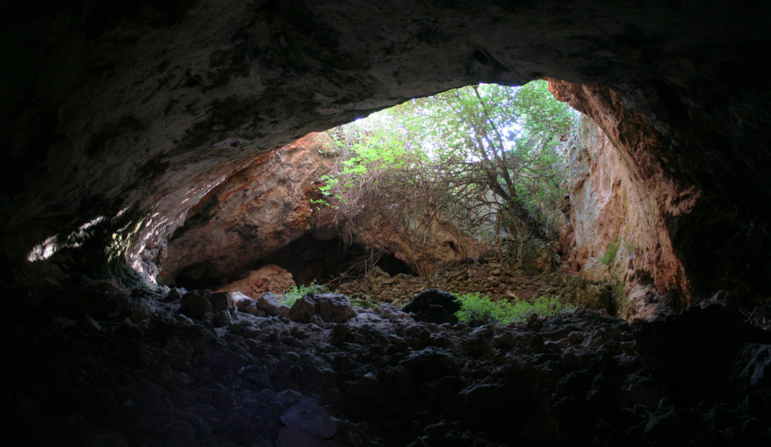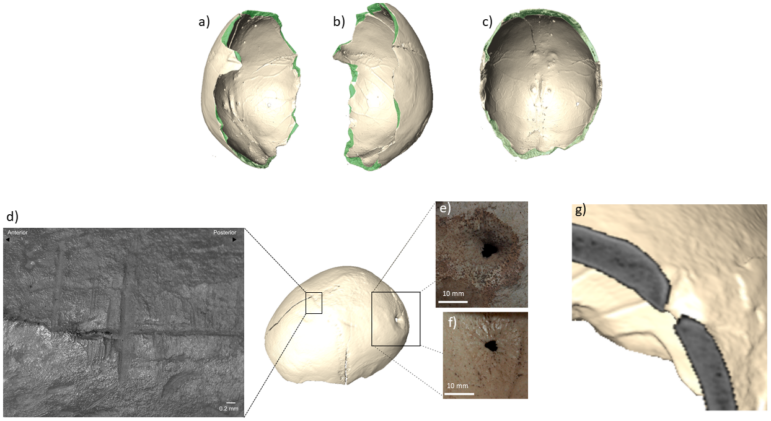
A study published this week in the science Journal PLOS One began with these famous words from the Hermetic text, the Emerald Tablet: as above so below. The research study suggests that the ancient people living on the Iberian Peninsula had complicated relationships with death, the afterlife, and human remains.
The researchers noted that “The use of caves for funerary purposes is a cultural phenomenon presenting a wide geographic and chronological distribution.” Caves have been used by numerous cultures across all contents with human habitation for funerary purposes. The caves of the Iberian Peninsula are no exception.
The current research focused on the “Cueva del los Mármoles” – Mármoles cave in Priego de Córdoba is northeast of the city of Granada in the Andalusia region in southern Spain. The area is rich with information about ancient humans and the region was a prized agricultural jewel in prehistoric times. Even today, it remains a major producer of agricultural products.
The region is also one cited by numerous theories as the crossing location for the first hominids to cross to Europe from Africa over the Straits of Gibraltar. One of the most ancient paintings in humanity was found in the nearby Caves of Nerja.

The Mármoles Cave in southern Spain. (Image credit: J.C. Vera Rodríguez, CC-BY 4.0]
The Mármoles cave was used by ancient farmers as a burial site. In modern times, the cave has been raided, excavated, and studied since 1934. The researchers noted that “starting from the early 1960s, the cave became one of the most targeted archaeological sites in the region by amateur and clandestine excavators.”
The current research focused on human remains primarily collected during surveys between 1998 and 2018. In total, the researchers examined 411 bone fragments and 57 teeth that were unearthed in various zones of the cave.
However, human skeletal remains recovered from the caves showed signs of cannibalism. Under microscopic analysis, the researchers found many bones had deliberate fractures, possibly to access the marrow for consumption. Bones had also been scraped to remove any remaining flesh.
The findings also point to the manipulation of the human remains long after death. The human remains were not discarded afterward. They were then fashioned into other tools.
The ancient residents – who lived in the caves over multiple generations between the fifth- and second millennium B.C.E – may have been manipulating the deceased’s bones, long after the cadavers had decayed within the cave’s cool, humid environment, explained researcher Marco Milella at the University of Bern in Switzerland.
“The ways in which humans treat and interact with [human] remains can teach us about the cultural and social aspect of past populations,” including their manipulation, retrieval, and reburial, the researchers said in a statement.
The research team found a tibia that had been polished with pits and used as a primitive tool, but the researchers were uncertain of its function. Other bones- a third of those found – had different types of crafting that altered them into tools, possibly to make bowls, cups, and spatulas.

“Skull-cup” MA-220: right (a), left (b), and inferior (c) view showing the percussion marks (green areas) along the rim of the cranial vault; microscopic view of scraping marks near the bregmatic area (d); exocranial (e) and endocranial (f) views of the circular defect on the left parietal bone; (g) computed tomographic image of the left parietal bone at the level of the discontinuity [photographs by Z. Laffranchi, CT images elaborated by M. Milella].
Arguably the most remarkable artifact in their examination was a “skull cup” fashioned from a human cranium, likely originating from a male aged between 35 and 50 at the time of his death. The analysis revealed that ancient individuals deliberately detached the cranium from the lower part of the skull by fracturing the bone along its periphery. Subsequently, they meticulously scraped the cranium multiple times to eliminate any remaining flesh.
But these bones were not manipulated for consumption. The researchers noted a “scarcity of marks” on them. Instead, the researchers noted that their place, grouping, and use appear to be related to more complex factors likely associated with cultural or ritual use.
The confluence of the initial burial phase in the cave and the onset of Megalithism (the prehistoric cultural phenomenon characterized by the construction of megalithic structures), coupled with the observation that the bone markings do not appear consistent with consumption, further bolsters the research team’s hypothesis that the human remains were deliberately fashioned for use as tools during a specific period.
“This suggests that Marmoles was a symbolic landmark for human communities living in the area, and was likely to be the presence of specific funerary traditions,” wrote the authors in an accompanying statement to the research publication. “Secondly, the most interesting aspect of our findings was the complex treatment of the remains, often difficult to interpret, but which unequivocally points to rather homogenous actions, and well-defined traditions and beliefs systems.”
The time period covered is also striking, covering the emergence and then the maintenance of ritual and cultural activity over millennia from the end of the Neolithic to the Bronze Age, a time “in which we did not expect to find that bodies were still deposited in this cavity,” says Martínez Sánchez.
Researchers will look for DNA evidence for clues about the groups of individuals using the cave and their relations to one another but mysteries still remain.
Researcher and co-author Rafael Martínez Sánchez says, “It seems that there was the idea of grouping the dead in the same place, cleaning the remains, and using the bones as instruments, perhaps related to some type of ritual performed inside the cavity.”
The researchers noted, “On a symbolic level, the perpetual darkness and subterranean placement of caves make them an ideal resting place for community members. Caves are frozen in time, lacking those phenomena usually marking the passing of time (e.g. plant life cycles, seasonal changes in light and temperature, and daily alternation between light and dark); the silence and subterranean position of caves would only add to their liminal connotation.
The skull caps may have been used as drinking vessels, but the purpose of the ritual remains unknown.
The Wild Hunt is not responsible for links to external content.
To join a conversation on this post:
Visit our The Wild Hunt subreddit! Point your favorite browser to https://www.reddit.com/r/The_Wild_Hunt_News/, then click “JOIN”. Make sure to click the bell, too, to be notified of new articles posted to our subreddit.
